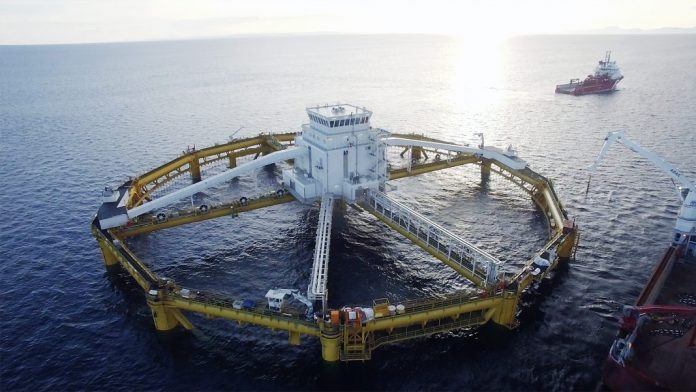SalMar has completed the first production cycle at the ocean farm “Ocean Farm 1”.
In September last year, an unintentional strucural tilt occurred because of water coming in through a hatch in a tank system, a supportive part of a sliding bulkhead which was inside the cage.
A recapture was initiated and a total of 82 escaped fish were caught near the cage. In consultation with the authorities and with the assistance of the Norwegian Institute for Nature Research (NINA), a monitoring program with several gillnet capture points were also initiated across salmon rivers throughout central Norway. A total of 40 salmon rivers have been monitored. The final report of this work will be available later this winter, but so far there has been no unusual reports of escaped farmed salmon in the rivers in the Namsen Fjord and the Trondheim Fjord.
“Against this background, we believe that we can observe that the escapes from the seawater have been relatively limited in scope. Now that the cage has been emptied of salmon, it can be stated that this cage is not relatively relatively shorter than what is common for the industry as a whole. Of a stock of nearly one million fish in the fall of 2017, we have a production loss of 15,805 fish or about 1.5 per cent that is within normal error margins in the industry,” SalMar wrote in a press release.
“Having said that, we cannot emphasize enough that we are taking the incident that caused this very seriously. We have subsequently made several studies, both internal and external, which have revealed several areas that we can improve and a number of measures have been implemented with this in mind,” said SalMar’s CEO Olav-Andreas Ervik.
The Ocean Farm project was the first to receive development permits by the Norwegian authorities in 2016, and the goal is to reduce the environmental footprint, improve fish welfare and respond to the industry’s area demands.
“Ocean Farm 1” has been a pilot project, with particular attention to biological conditions and fish welfare. It has been a large and demanding project for testing and developing new and innovative equipment technology that benefits the entire industry.
“The early harvest from the cage (located in Frohavet outside Frøya, Central Norway) began at the end of September/begining of October last year and ended at the beginning of this week. After 15 months of production in the sea, we can conclude that the fish has shown very good growth and that the quality is smooth and good. Few salmon lice have been observed and it has not been necessary to carry out a single lice treatment,” SalMar pointed out.
“In summary, these results give us an answer that the direction is correct – the biological results are proof of that. We are confident that farming salmon further out to sea is right,” said Ervik.
With the Ocean Farm project, SalMar will build on what the company considers fundamental strengths of offshore farming in Norway. The Norwegian Sea is the home of the North Atlantic salmon strain, with good water exchange and favorable temperatures from the Gulf Stream.

